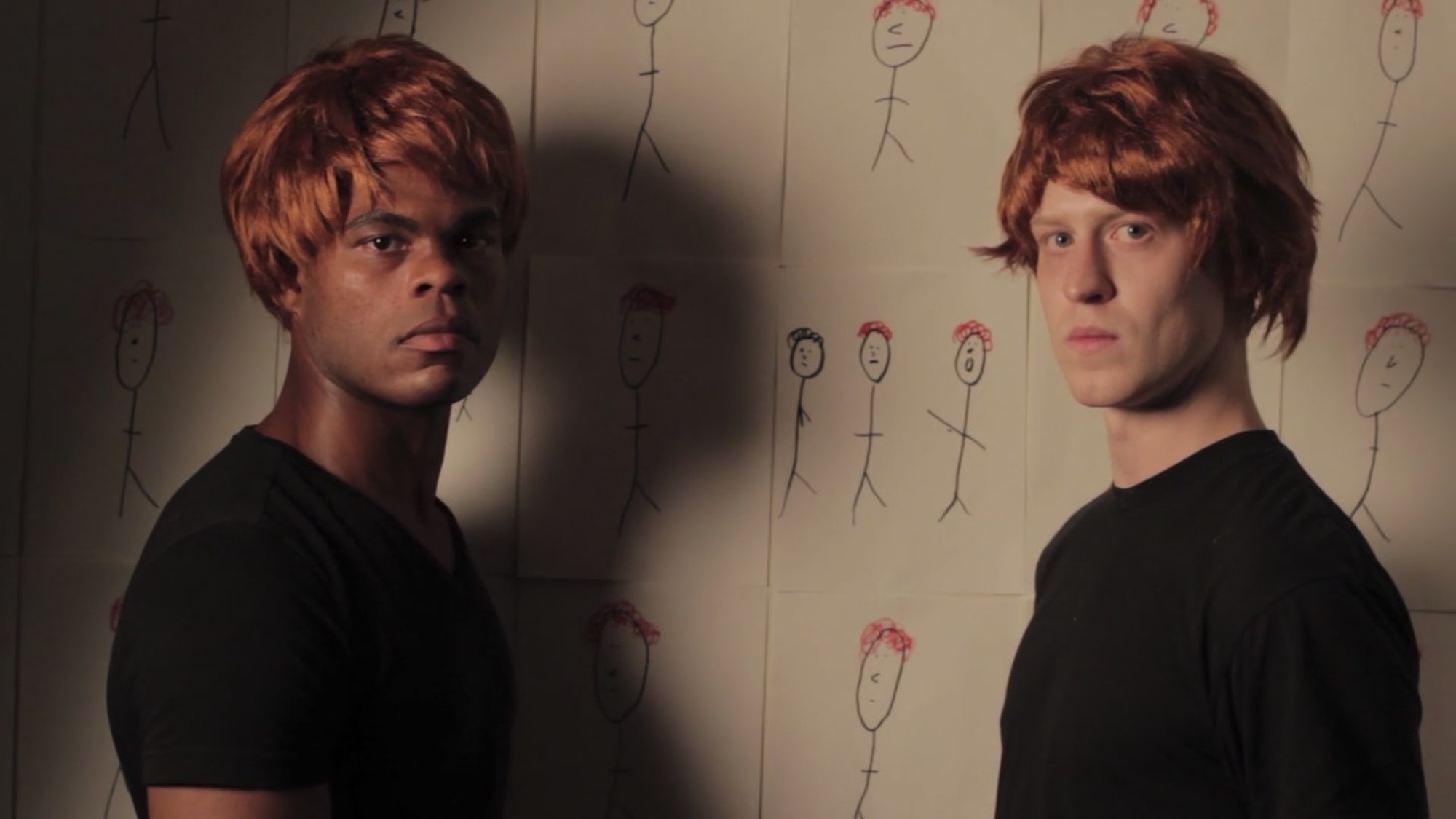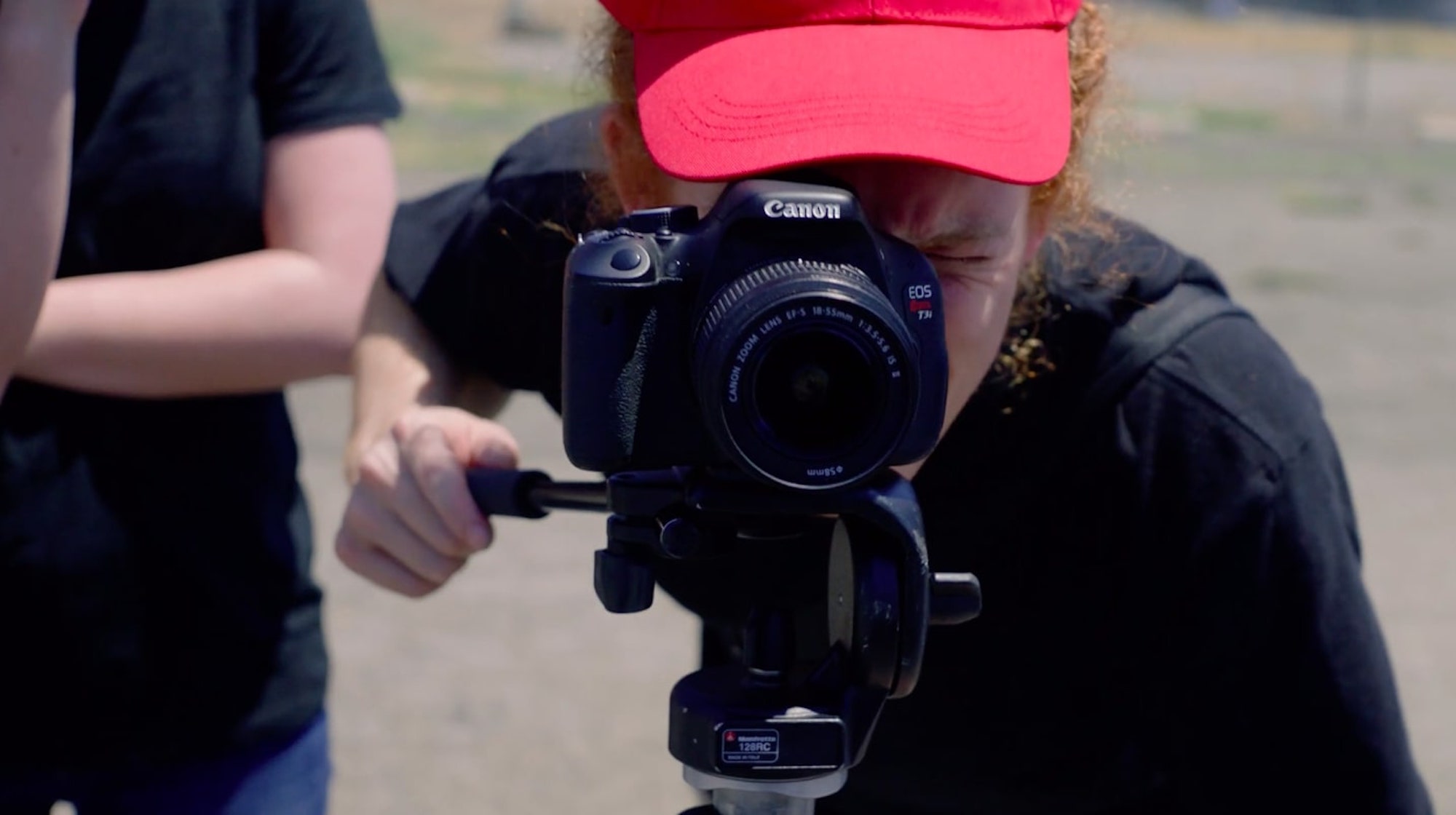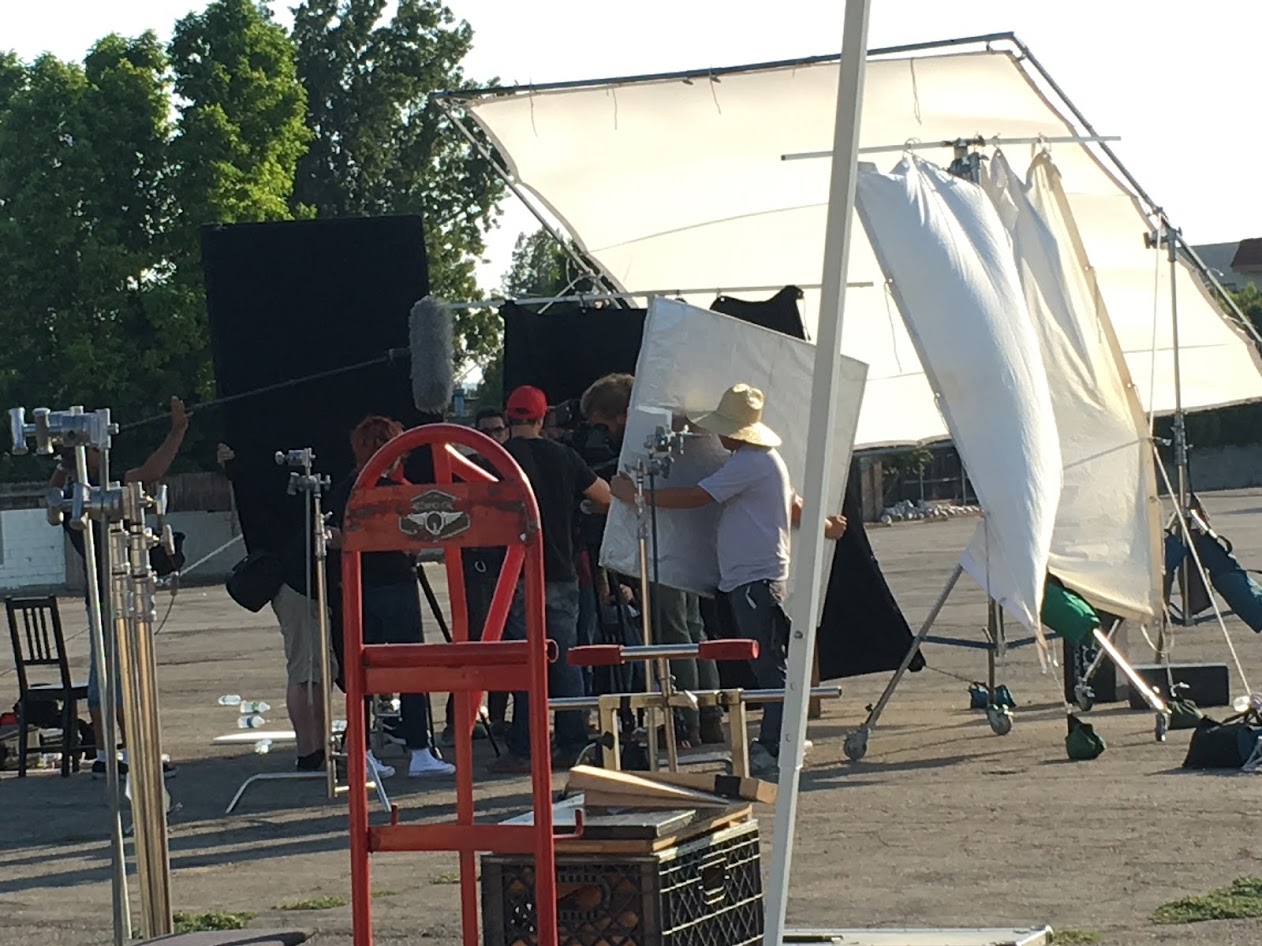
We all have dreams of making films with our friends but making it happen can be quite a perilous challenge. Jens Josephs found this out the hard way when he tried to make a road movie with childhood friend Lucas. The shoot breaking down almost irreparably, he had to improvise in order to get the film finished. The result is Getting There, a satisfying slice of movie-meta-fiction that brings to mind Synecdoche New York and the playfulness of late period Orson Welles. We talked to the LA-based writer/director about the magic of artifice, the need for self-deprecation and using the most annoying jazz song ever made.
Is Lucas a good friend of yours?
He’s one of those childhoods friends who you’re secretly envious of and passively competitive with. The film was sort of me having a passive aggressive fight with him where I got to choose my own words, get every last word and also choose ‘his’ words.
Did you actually try and make the initial movie together?
Yeah we did. And it didn’t really work like it didn’t in the film.
Why?
Clash of intentions. We were both making different films even though I wrote a script and sent it to him beforehand.
When it fell apart, how did you get the idea to recast it as a work of metafiction?
As necessity. It wasn’t finished and it needed to be finished. I didn’t really want to ask him to shoot more footage so the only option was to get people to play us and shoot it in an empty parking lot.

Why there?
It was between a parking lot and a stage. I thought imaginary cars were better suited for pavement than using imaginary pavement. You choose your battles and you choose your artifices. You can’t have too many.
The only option was to get people to play us and shoot it in an empty parking lot.
The film does have a ‘lot’ of artifice though — with people playing themselves and films within films within films. When do you stop and figure out how to make the film actually work?
That’s kind of a big question. First off, I think that acknowledging artifice is one of the most important things in art and particularly in comedy. You see a lot of really bad comedians just assume that their jokes are working. An audience can detect that.
Is this like when a comedian tells a joke that doesn’t land then makes a joke about the joke?
Yeah. Better if the joke ‘does’ work. There needs to be some acknowledgement, especially in stand-up. Because you’re not suspending disbelief. Everybody is forced to listen to you and encouraged to laugh. Whereas in a normal conversation, this completely absurd conversation doesn’t happen.

One of the golden rules in stand-up, with a few exceptions, is not to laugh at your own jokes. Is this why everybody in your film keeps a straight face?
I guess that kind of comes from growing up as a little redheaded boy and being made fun of. The way that you overcome that is to put on a straight face. Self-deprecation works best when people aren’t really sure you’re doing it. It excites the imagination, this kind of idea that I can’t tell what you are. In a way, it’s a mask that keeps people from identifying you as a serious person or somebody who is making fun of themselves.
Orson Welles seems to be an inspiration here, especially the games of F for Fake…
F for Fake was huge. What I love most about Orson Welles is this bravado, this perfectly articulate, perfectly dressed man orating his film. I like to think of this film as like Orson Welles if he was really really shy.
Acknowledging artifice is one of the most important things in art and particularly in comedy.
In your short film series, Hollywood Stories Told from Burbank, the low angles seem to suggest you are shooting yourself as Orson Welles. Was this a purposeful homage?
Oh yeah. I like movies where someone is taking control of the film, where you feel like you’re being guided. I really respond to films where that layer is removed and someone is saying: “Look, I’m doing this to you and saying it out loud.” I think Orson Welles does that. Even in his fiction films, he’s always showing us exactly what he’s doing while doing it.
Tell me about the use of teddies as characters in that short?
I had a large vision for True Hollywood Stories. I wanted large sets, large casts, and crane shots but I didn’t have any money. So I made my large film into a small film — using cardboard and markers instead of sound stages, and stuffed animals instead of actors. Raising my hands with my camera I could get hundred foot aerial shots at a moment’s notice. Swooping my hands left to right I made the most magnificent crane shots. At lunch time I fed only myself. At the wrap party I laughed at my own jokes.
Getting There has a great moment where Lucas sees the film and he’s overly critical. Do you think the reactions of friends and family can be the biggest barrier when starting out as a filmmaker?
I don’t think you can think that way. Showing the film to Lucas definitely happened. That was a recreation of it. He really did not like it. But if you want to make anything, you can’t allow yourself to dwell on it. Films are such personal things. You’re going somewhere very particular and if you allow too many outside voices you end up lost somewhere else.
One voice is very strong in the film: Dave Brubeck and the iconic Take Five, famously in 5/4, which helps to give the film a stop-start feel. Why did you pick this classic?
For any serious jazz musician, Take Five is the most annoying song ever written. I thought that it added tedium, like when they torture prisoners by using a really loud and terrible pop song and play it on repeat. But I do actually like the song, embarrassingly. It has that exact feeling that this film has: repetition guided by a drum solo.



Did the song help to structure the footage?
I actually choreographed the film to the song so I had the song while I was writing it. My father’s a film composer, and he brought in some great jazz musicians from the East Coast area where I’m from. We talked about which points in the film I wanted a drum flourish or the beat to change slightly for a joke. He scored it with Take Five to the footage I had.
Films are such personal things. You’re going somewhere very particular and if you allow too many outside voices you end up lost somewhere else.
You use wrong casting, with people who look nothing like yourself or Lucas, with even the gender changed. Why?
There’s all this talk in Hollywood about casting the right person. I wanted to cast the wrong person. I just wanted the best actors that I could get and these were my friends or friends of friends. My whole design was like theatre when you have a group of players working on different productions throughout who play different roles. We’re talking about artifice. Another element of that is putting people in the film who are not the people they are portraying. I also like putting red wigs on people. I think it’s funny.

What are you working on next?
I’m working on a feature shooting in the spring. If I don’t get sued, it’s going to be called La La Land 2. If I do get sued I’m calling it Damien Chazelle’s Untitled Production. It’s about the Los Angeles I know and that other people know but don’t want to talk about. La La Land is referencing old classic Hollywood cinema, which is full of tropes and clichés. I love La La Land, but this is the negative of that. Still with music and dancing, but with people who sit in their rooms all day thinking and dreaming about where they would like to be while they’re still in their rooms.
I’m also finishing up a short film called An Actor Prepares to Turn 30, sort of based on Stanislavski’s An Actor Prepares… you can guess what that’s about.
More metafiction! What draws you this style?
I guess it’s where my mind goes. I think of my films being watched by people. I think, if I were in the audience, what would I want to see? I would want to see somebody who was talking with me and to me, not at me. I think this achieves that.


